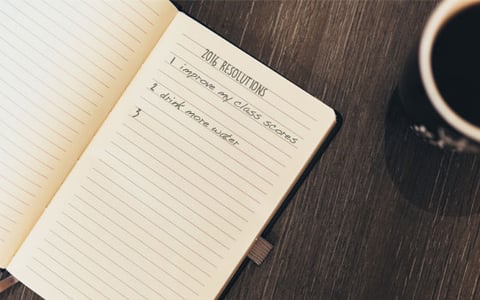
The science is in on New Year’s resolutions. According to a recent article by Bob Sulilvan in the St. Louis Post-Dispatch, about half of us will resolve to change something in 2016, and about half of those resolvers will have given up by Valentine’s Day (that makes sense to me, I mean, the chocolate alone!). In spite of those odds, I love a good couple of New Year’s resolutions. Setting meaningful CLASS goals for the rest of your school or program year don’t have to be overwhelming, in fact, the simpler the better!
Recipe for Resolution Success
To avoid that February burn out, “pick small, specific goals and stick to them. As professional athletes often say, take care of the little things and the results will take care of themselves” (Sullivan, 2016). And what better way to make a true impact in the classroom than to pick one goal from each CLASS domain? Even better, how about resolutions that support each other and work together? We know from research that small improvements in CLASS scores can have meaningful impacts on children’s outcomes. So let’s get this New Year’s Resolutions Party started!
Pre-K Resolutions
The Pre-K CLASS tool has three domains; Emotional Support (ES) which looks at what teachers do to support children’s social and emotional functioning in the classroom; Classroom Organization (CO) looks at how teachers manage children’s time, attention, and behavior in the classroom; and Instructional Support (IS) which looks at how teachers promote higher order thinking skills and language. Let’s set three goals, one per domain. Not just any goals—but goals that support one another across domains:
- ES: I will spend as much time as possible throughout the preschool day in close proximity to the children and freely join in their daily activities.
- CO: At all times of the day, I will be fully prepared and provide a variety of activities, keeping children busy.
- IS: Throughout my time with the children each day, I will engage in conversations, talking about their work in the classroom, how things are going in their home life, and asking open-ended questions whenever possible.
Toddler Resolutions
The Toddler CLASS tool has two domains. Emotional and Behavioral Support (EBS) considers what teachers do to provide social and emotional supports that promote all areas of development and manage children’s behavior, time, and attention in the classroom. And Engaged Support for Learning (ESL) refers to what teachers do to promote cognitive and language development. Again, let's set two goals—one per domain—that support one another across domains.
- EBS: I will spend as much time as possible throughout the toddler day in close proximity to the children, freely joining in play and activities. I will do this during both structured times as well as routines such as diaper changing/potty time and meals.
- ESL: Throughout my time with the children each day, I will engage in conversations with toddlers, asking questions and adding comments as I support their learning and development.
Infant Resolution
The Infant CLASS tool has one domain, Responsive Caregiving (RC), which encompasses what teachers do to provide social emotional supports, encourage children’s engagement and development, and how they support language development. Let’s set one goal to support our Infant CLASS efforts.
- RC: I will spend as much time as possible throughout the day in close proximity to the children, joining in their activities, noticing their interests, following their leads, and talking to and with them.
No matter what age group you work with, I hope these simple goals will support your CLASS journey through 2016, and beyond! Try not to worry about setbacks; making change is always a work in progress. Do be kind to yourself, as “Gretchen Rubin, author of Better than Before and The Happiness Project, makes the point that people who treat themselves (and others) with sympathy have an easier time picking themselves up after a fall” (Sullivan, 2016).

